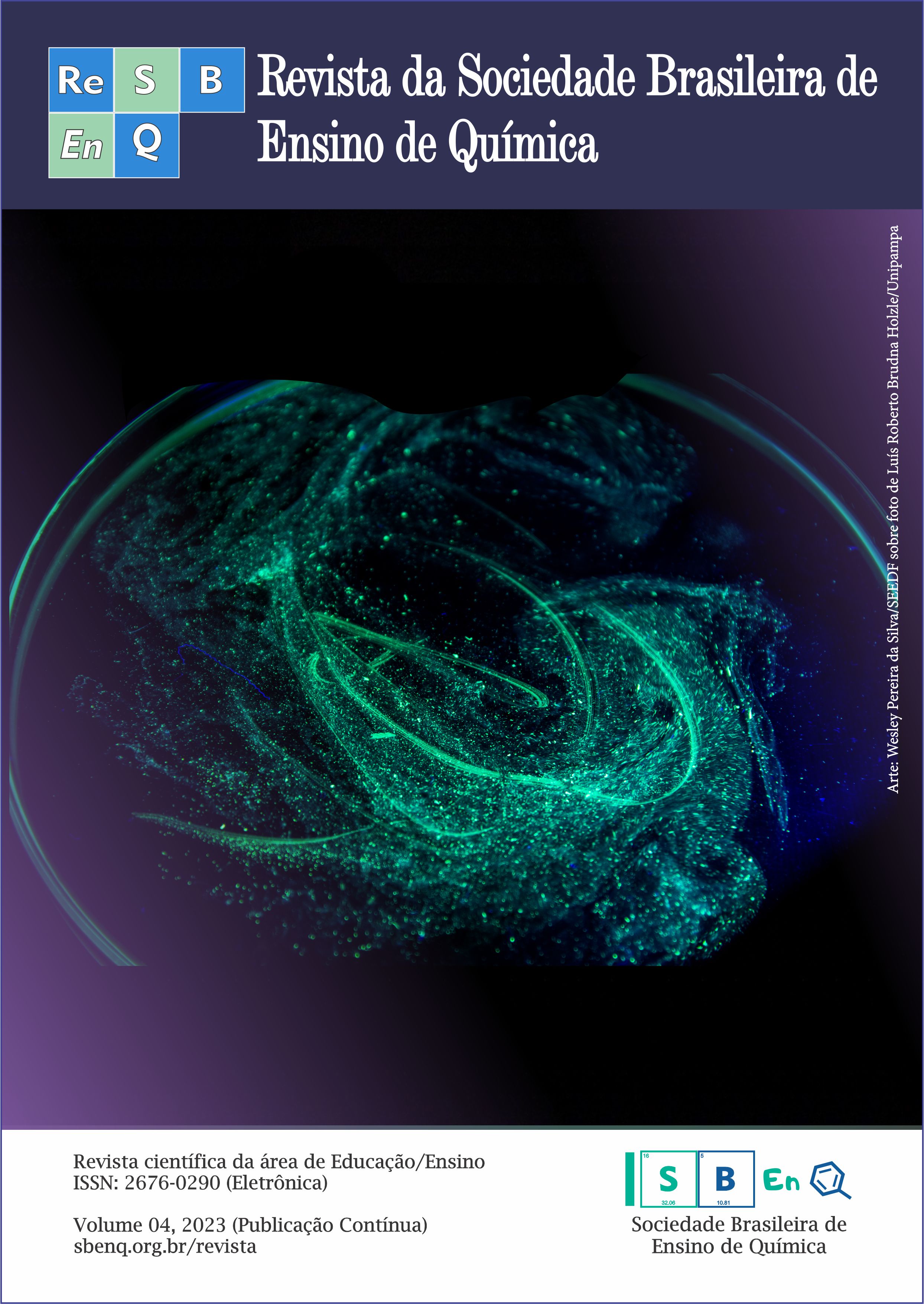From a simple model to the complexity of a Dynamic System: the transformation of physical states and the storm
DOI:
https://doi.org/10.56117/resbenq.2024.v5.e052407Keywords:
Artificial Intelligence, Modeling, Teaching-Learning, Science EducationAbstract
The present study presents the results of a research aimed at appropriating Artificial Intelligence (AI) techniques, through Qualitative Reasoning (QR), to represent mathematical functions without the use of numbers and with explicitly identified causal relationships, for the construction of qualitative simulation models in Science and Chemistry education. Previous studies demonstrate the potential of QR to address dynamic systems through activities that explore, with the support of simulation models, the use of hypothetical-deductive reasoning to analyze complex concepts, and to broaden the range of materials and activities available to teachers. For this purpose, we adopted the DynaLearn modeling platform (www.dynalearn.eu), a graphical interface software, with six levels of learning, called Learning Spaces (LS), progressively more complex, which facilitate the construction of models and the presentation of simulation results. Thus, we built a set of three qualitative models capable of describing the transition of the aggregation states of water, as well as their involved processes. We started with a simple model to represent the transition of the physical states of water. Even without a causal explanation, the model indicates points and intervals, showing that a substance does not change its aggregation state without first beginning and ending each state change. Then, we expanded the scenario, including different causal relationships and processes. Next, we contextualized the models from the application in a natural phenomenon that constantly occurs in Brazil: the case of storms. The models presented in this paper are powerful tools to be used in Science and Chemistry education, providing the main explanation for the transition of physical states, which are rarely addressed in the classroom: energy exchanges.
References
Bredeweg, B., Liem, J., Beek, W., Linnebank, F., Gracia, J., Lozano, E., ... & Mioduser, D. (2013). DynaLearn – An Intelligent Learning Environment for Learning Conceptual Knowledge. AI Magazine, 34(4), 46-65.
Forbus, K. D., & de Kleer, J. (1993). Building Problem Solvers. Cambridge, MA: MIT Press.
Gamboa, S. F. (2007). Pesquisa teórica: uma reflexão epistemológica e sua importância na produção do conhecimento. Revista Diálogo Educacional, 7(21), 87-103.
Globoplay. Como o Brasil e o mundo estão se preparando para nova realidade do clima? Recuperado em 09 de outubro de 2024, de https://globoplay.globo.com/v/7540228/
Leal, M. C. (2010). Didática da Química: Fundamentos e práticas para o ensino médio. Belo Horizonte.
Ribeiro, A. A., & Greca, I. M. (2003). Simulações computacionais e ferramentas de modelização em educação química: uma revisão de literatura publicada. Química Nova, 26(4), 542-549.
Rykiel, E. J. (1996). Testing Ecological Models: the Meaning of Validation. Ecological Modelling, 90, 229-244.
Salles, P., Bredeweg, B., Noble, R., Zitek, A., & Souza, A. B. (2012). Qualitative Model Patterns: a Toolkit for Learning by Modelling. In 26th International Workshop on Qualitative Reasoning, Playa Vista, CA, USA (Vol. 1).
Teodoro, P. V., Salles, P., & Gauche, R. (2023). A Qualitative Model of the evaporation process for science education. In 15th Conference of The European Science Education Research Association (ESERA), Capadócia, Turkey. Esera Conference Proceedings.
Teodoro, P. V., Gomes, D. C. M., & Silva, L. R. R. (2023). A Inteligência Artificial a partir do Raciocínio Qualitativo: panorama de materiais didáticos no Ensino de Ciências Naturais. Boletim de Conjuntura, 16, 378-390.
Teodoro, P. V., Salles, P., & Gauche, R. (2024). System dynamics through qualitative modeling in DynaLearn: Results from research conducted in a Brazilian high school context. In A. M. Olney, I.-A. Chounta, Z. Liu, O. C. Santos, & I. Bittencourt (Eds.), Communications in computer and information science (Vol. 2151, pp. 251-258). Springer Nature Switzerland.
Tiedemann, P. W. (1998). Conteúdos de Química em Livros Didáticos de Ciências. Ciência & Educação, 5(2), 15-22.
Oliveira, A. C. G., & Petrucci-Rosa, M. I. (2016). Recontextualizações e hibridismos em processos de elaboração e avaliação de Livros Didáticos de Química. Química Nova na Escola, 38(3), 273-283.
Souza, P. V. T. (2019). Modelos de simulação qualitativos como estratégia para o ensino de Ciências (Tese de doutorado, Universidade de Brasília).
Souza, P. V. T., Salles, P., & Gauche, R. (2017). Um modelo de simulação baseado em raciocínio qualitativo para a educação em ciências. ACTIO: Docência em Ciências, 2, 162-183.
Published
Issue
Section
Licença Creative Commons
Todas as publicações da Revista da Sociedade Brasileira de Ensino de Química estão licenciadas sob licença Creative Commons Attribution 4.0 International License. (CC BY 4.0).
Autores que publicam nesta revista concordam com os seguintes termos:
- Autores mantêm os direitos autorais e concedem à revista o direito de primeira publicação, com o trabalho simultaneamente licenciado sob a Licença Creative Commons Attributionque permite o compartilhamento do trabalho com reconhecimento da autoria e publicação inicial nesta revista.
- Autores têm autorização para assumir contratos adicionais separadamente, para distribuição não-exclusiva da versão do trabalho publicada nesta revista (ex.: publicar em repositório institucional ou como capítulo de livro), com reconhecimento de autoria e publicação inicial nesta revista.
- Autores têm permissão e são estimulados a publicar e distribuir seu trabalho on-line(ex.: em repositórios institucionais ou na sua página pessoal) a qualquer ponto antes ou durante o processo editorial, já que isso pode gerar alterações produtivas, bem como aumentar o impacto e a citação do trabalho publicado (Veja O Efeito do Acesso Livre).



